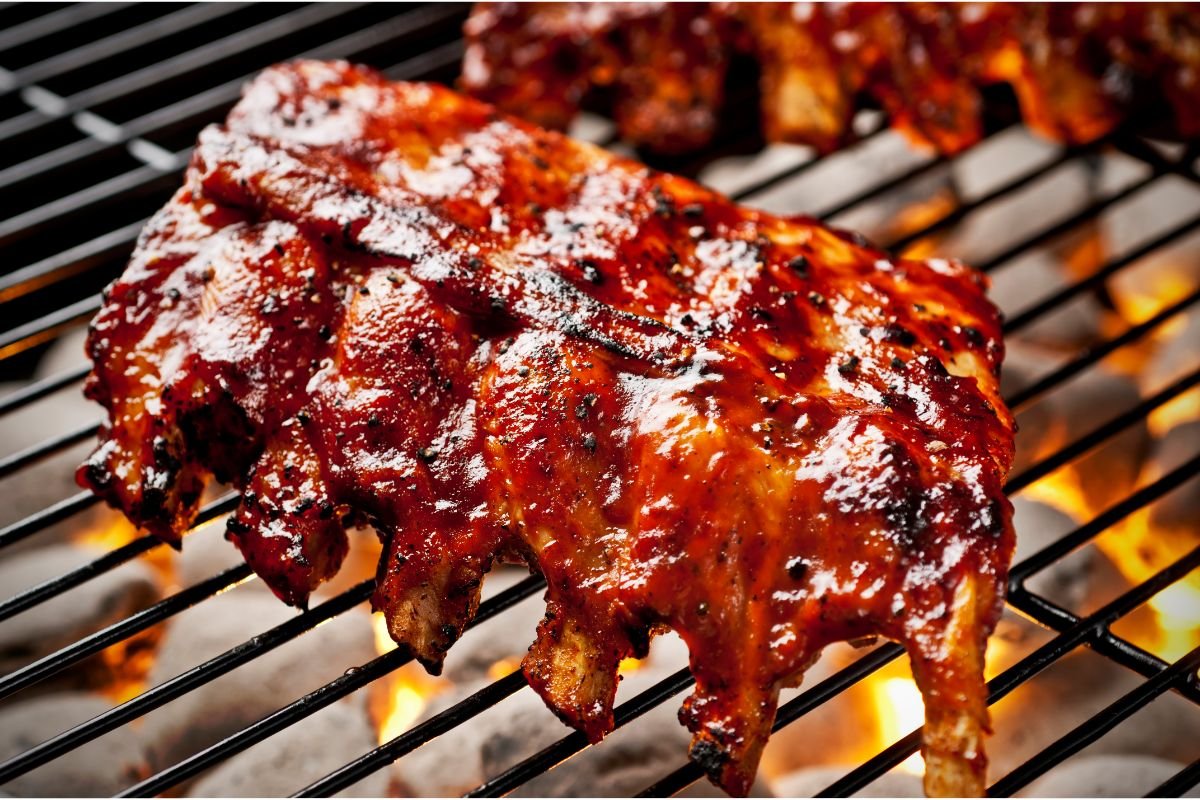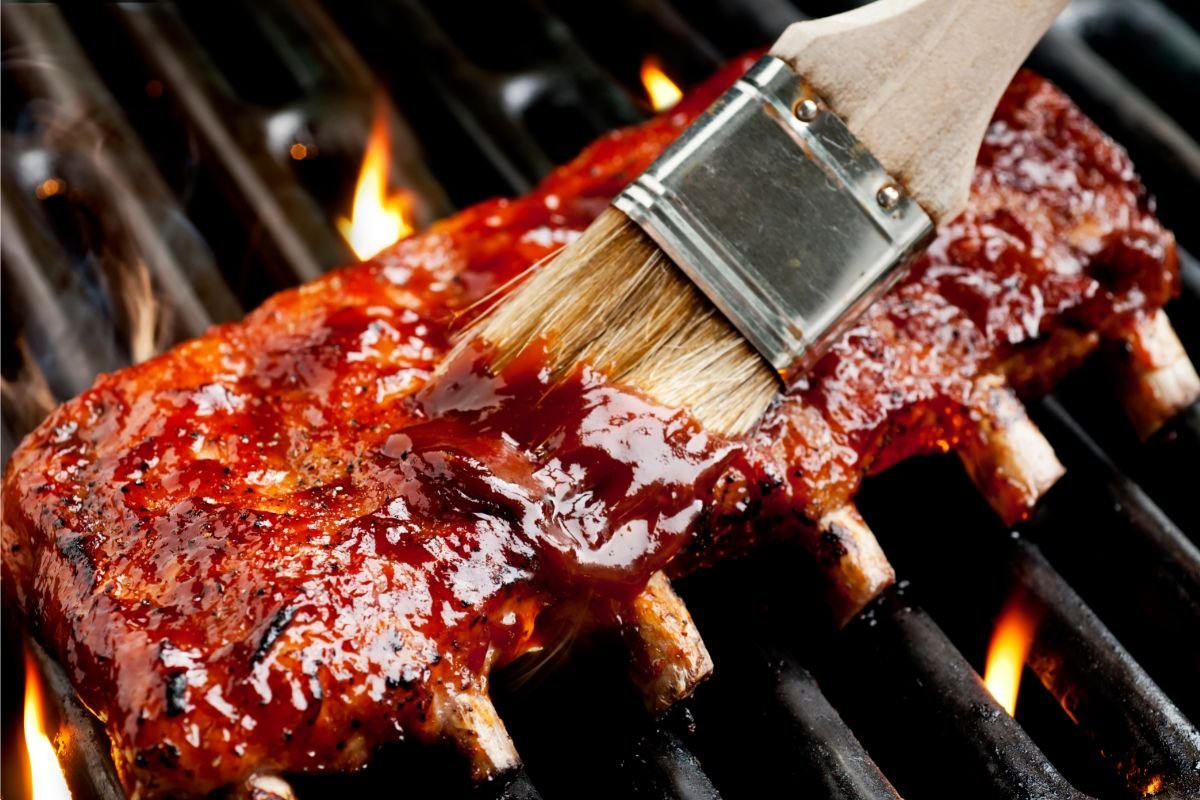The texture of meat is one of the most important factors. Let’s be real – nobody enjoys biting on chewy, gristly, or tough meat.
Fortunately, the power is in your hands to control the texture of whatever meat you’re cooking, and it all comes down to getting the temperature just right.

The problem is, perfecting the temperature of the meat is easier said than done.
The inside of the meat will always be the coolest part, so even if the temperature of the grill or smoker matches the same temperature as the recipe, the internal temperature of the meat will be different.
The best way to control the internal temperature of meat is with a method called probing. Probing the meat can be the difference between a tough and tender piece of meat.
So, if you want to know everything about probing ribs to get the right texture, you’ve come to the right place. Here’s how and where to probe ribs to get the perfect temperature!
What Is Probing?
Probing is the process of embedding a probe thermometer into a piece of meat to get an accurate reading of the internal temperature.
Not only does it tell you the accurate temperature of the meat, but probing can also contribute to the texture of the meat. This is because probing meat can tenderize it.
Why Is Probing Important?
Probing is important for several reasons, with the most important being that it lets you know when the meat has reached a certain internal temperature.
This internal temperature will indicate whether the meat is ready to rest or if it needs to be cooked for longer.
In the case of pork ribs, ribs need to reach a high internal temperature to achieve the perfect texture and consistency.
As pork ribs don’t have the same structure as pork butt or shoulder, then you need to know the best places to probe ribs to know the internal temperature.
Where To Probe Ribs?
A rack of pork ribs will consist of roughly 8 to 13 ribs, depending on the size of the cut and how many bones have been damaged.
It’s important to know where these bones are located, because the internal temperature of bone is different from the internal temperature of meat.
So, you need to avoid probing the bones by accident, as this will lead to an inaccurate reading.
In the same breath, you also need to avoid probing fatty areas. This is because fat conducts heat differently to the meat.
Luckily, the fat will have mostly cooked off towards the end of the cooking time, so this shouldn’t be a problem.
So, the best place to probe ribs is the meatiest area between the bones and underneath the fatty areas.
While you can probe other areas of the ribs, try to aim for just the middle, as this will be the thickest part of the meat. It should take roughly 5 seconds for the probe thermometer to get an accurate reading.

Perfect Internal Temperature Of Ribs
The ideal internal temperature for a rack of ribs is 195 degrees Fahrenheit. Technically speaking, you can eat the ribs at an internal temperature of 185 degrees Fahrenheit, but the best results come from an internal temperature of 195.
This internal temperature will allow the meat to fall off the bones.
However, if you cook the ribs for too long, then the increased internal temperature will result in a leathery, tough texture.
How Long To Cook Ribs?
It’s not really easy to say the perfect cooking length for ribs, because it depends on the temperature of the smoker, the size of the rack, and the kind of ribs.
For an average rack of spare ribs weighing 3-4 pounds, and cooking at a temperature of 225 degrees Fahrenheit, it should take about 6 hours for the ribs to cook.
This is only if you use the 3-2-1 rib method, wherein you wrap the ribs in aluminum foil after the first 3 hours of cooking.
Smaller and leaner ribs, like loin back ribs, will inevitably take less time to cook.
For ribs that are lighter and leaner, they should be cooked with the 2-2-1 method, wherein the ribs are wrapped in foil for two hours after the first two hours unwrapped.
This means the cooking time will be 5 hours in a smoker.
Which Ribs Temperature Should I Aim for When Using a Digital Meat Thermometer?
When using digital meat thermometers for smoking, aim for a temperature of 225-250°F for pork ribs and 275-300°F for beef ribs. Maintaining the right temperature is crucial for achieving tender, flavorful ribs. Ensure the thermometer is inserted into the thickest part of the meat without touching bone for accurate readings.
How To Calibrate The Probe Thermometer
Before probing the ribs, you need to calibrate the probe thermometer.
This will help the thermometer read the correct internal temperature, because even if it’s slightly out by a couple of degrees, this will impact the consistency and texture of the ribs.
The best way to calibrate a probe thermometer is to fill a glass with ice cubes and cold water. Dip the thermometer straight into the water, ensuring it doesn’t touch the sides or the bottom.
You can hold the thermometer about two inches beneath the surface.
Now, you need to wait a matter of seconds for the temperature to read either 32 degrees Fahrenheit or 0 degrees Celsius. Make sure to repeat this process if the figures don’t stay steady for a minute or two.
Guessing The Internal Temperature Of Ribs Without A Thermometer
If you don’t have a meat thermometer, then there is a way to guess the doneness of the ribs without one. However, it is recommended to use a thermometer when cooking ribs if you want the best results.
To test the doneness, lift one of the short ends of the rack upwards with a pair of heatproof tongs. Then, apply a light amount of pressure to the middle of the rack with a cooking utensil.
If the meat bends in the middle, then it has finished cooking. This typically shows that the meat is ready to fall off the bone, so try not to push too hard.
Another way to tell the doneness of the ribs is by sticking a toothpick into the meatiest section of the ribs. If the toothpick slides in and out with no resistance, then it’s a sign that the meat is ready.
Conclusion
So, there you have it! Probing a rack of ribs towards the end of the cooking process is essential if you want the ribs to fall off the bone and melt in the mouth.
After all, you don’t want to waste the cooking time only to be left with a chewy, leathery, and tough rack of ribs that’s hard to bite.
Just make sure to aim for probing the middle section of the ribs between the bones, as this is the meatiest area, to get the most accurate reading. Happy probing!
